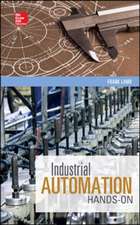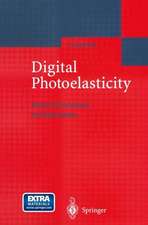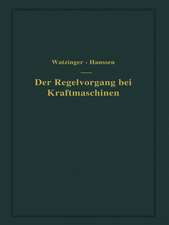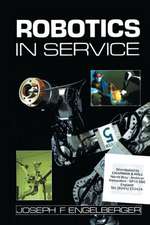Spacecraft Navigation and Guidance: Advances in Industrial Control
Autor Maxwell Notonen Limba Engleză Paperback – 10 dec 2011
Din seria Advances in Industrial Control
- 15%
 Preț: 643.34 lei
Preț: 643.34 lei - 23%
 Preț: 582.63 lei
Preț: 582.63 lei - 18%
 Preț: 783.98 lei
Preț: 783.98 lei - 18%
 Preț: 947.35 lei
Preț: 947.35 lei - 20%
 Preț: 568.24 lei
Preț: 568.24 lei - 15%
 Preț: 643.16 lei
Preț: 643.16 lei - 18%
 Preț: 899.21 lei
Preț: 899.21 lei - 18%
 Preț: 891.33 lei
Preț: 891.33 lei - 18%
 Preț: 740.57 lei
Preț: 740.57 lei - 18%
 Preț: 961.23 lei
Preț: 961.23 lei - 18%
 Preț: 955.08 lei
Preț: 955.08 lei - 15%
 Preț: 645.28 lei
Preț: 645.28 lei - 15%
 Preț: 638.43 lei
Preț: 638.43 lei - 18%
 Preț: 901.11 lei
Preț: 901.11 lei - 18%
 Preț: 1410.94 lei
Preț: 1410.94 lei - 18%
 Preț: 728.91 lei
Preț: 728.91 lei - 20%
 Preț: 1003.78 lei
Preț: 1003.78 lei - 18%
 Preț: 947.35 lei
Preț: 947.35 lei - 15%
 Preț: 643.34 lei
Preț: 643.34 lei - 15%
 Preț: 654.30 lei
Preț: 654.30 lei - 18%
 Preț: 950.52 lei
Preț: 950.52 lei - 15%
 Preț: 644.30 lei
Preț: 644.30 lei - 18%
 Preț: 1393.09 lei
Preț: 1393.09 lei - 18%
 Preț: 950.21 lei
Preț: 950.21 lei - 18%
 Preț: 949.90 lei
Preț: 949.90 lei - 18%
 Preț: 949.42 lei
Preț: 949.42 lei - 18%
 Preț: 950.52 lei
Preț: 950.52 lei - 18%
 Preț: 1113.71 lei
Preț: 1113.71 lei - 15%
 Preț: 650.04 lei
Preț: 650.04 lei - 15%
 Preț: 644.95 lei
Preț: 644.95 lei - 18%
 Preț: 950.33 lei
Preț: 950.33 lei - 18%
 Preț: 948.61 lei
Preț: 948.61 lei - 18%
 Preț: 1112.60 lei
Preț: 1112.60 lei - 15%
 Preț: 644.63 lei
Preț: 644.63 lei - 18%
 Preț: 953.20 lei
Preț: 953.20 lei - 18%
 Preț: 945.62 lei
Preț: 945.62 lei - 15%
 Preț: 640.88 lei
Preț: 640.88 lei - 15%
 Preț: 640.88 lei
Preț: 640.88 lei - 20%
 Preț: 650.92 lei
Preț: 650.92 lei - 18%
 Preț: 1112.60 lei
Preț: 1112.60 lei - 20%
 Preț: 998.36 lei
Preț: 998.36 lei - 15%
 Preț: 643.34 lei
Preț: 643.34 lei - 18%
 Preț: 948.92 lei
Preț: 948.92 lei - 18%
 Preț: 1381.43 lei
Preț: 1381.43 lei - 15%
 Preț: 651.51 lei
Preț: 651.51 lei - 15%
 Preț: 647.08 lei
Preț: 647.08 lei - 20%
 Preț: 563.66 lei
Preț: 563.66 lei - 18%
 Preț: 992.64 lei
Preț: 992.64 lei - 18%
 Preț: 1225.79 lei
Preț: 1225.79 lei
Preț: 635.65 lei
Preț vechi: 747.82 lei
-15% Nou
Puncte Express: 953
Preț estimativ în valută:
121.64€ • 130.07$ • 101.41£
121.64€ • 130.07$ • 101.41£
Carte tipărită la comandă
Livrare economică 18 aprilie-02 mai
Preluare comenzi: 021 569.72.76
Specificații
ISBN-13: 9781447115854
ISBN-10: 1447115856
Pagini: 198
Ilustrații: XIV, 181 p.
Dimensiuni: 155 x 235 x 10 mm
Greutate: 0.29 kg
Ediția:Softcover reprint of the original 1st ed. 1998
Editura: SPRINGER LONDON
Colecția Springer
Seria Advances in Industrial Control
Locul publicării:London, United Kingdom
ISBN-10: 1447115856
Pagini: 198
Ilustrații: XIV, 181 p.
Dimensiuni: 155 x 235 x 10 mm
Greutate: 0.29 kg
Ediția:Softcover reprint of the original 1st ed. 1998
Editura: SPRINGER LONDON
Colecția Springer
Seria Advances in Industrial Control
Locul publicării:London, United Kingdom
Public țintă
ResearchCuprins
1. Orbital Mechanics.- 1.1 Introduction.- 1.2 The Two-Body Problem.- 1.3 Orbital Elements and Reference Axes.- 1.4 Time in Orbit.- 1.5 Lambert’s Time of Flight Theorem.- 1.6 Orbital Manoeuvres.- 1.7 Patched Conies.- 1.8 Numerical Integration of Orbits.- 1.9 Software.- 2. The Launch Phase.- 2.1 Introduction.- 2.2 Propulsion.- 2.3 Launch Systems.- 2.4 Trajectory Dynamics.- 2.5 Computation of the Nominal Ascent Trajectory.- 2.6 A Computed Example: Ariane 4.- 2.7 Optimization of the Ascent.- 2.8 In-flight Guidance.- 2.9 The Guidance and Navigation System.- 2.10 Software.- 3. Earth Satellites: Perturbations and Manoeuvres.- 3.1 Introduction.- 3.2 Variation of the Orbital Elements.- 3.3 Gravitational Field of the Earth.- 3.4 Perturbations from the Sun and the Moon.- 3.5 Effect of Atmospheric Drag.- 3.6 Illustrative Computations of Perturbations.- 3.7 Correcting Low Earth Orbits.- 3.8 Geostationary Orbits.- 3.10 Software.- 4. Orbit Determination.- 4.1 Introduction.- 4.2 First Estimates of Orbits.- 4.3 Refinement of Orbits.- 4.4 Sequential Estimation.- 4.5 Software.- 5. Midcourse and Gravity Assist Manoeuvres.- 5.1 Introduction.- 5.2 Midcourse Manoeuvres.- 5.3 Gravity Assist Manoeuvres.- 5.4 Software.- 6. Low Thrust Missions.- 6.1 Introduction.- 6.2 Electric Propulsion.- 6.3 Optimization of Low Thrust Trajectories.- 6.4 Guidance on Low Thrust Trajectories.- 6.5 Software.- 7. Atmospheric Entry.- 7.1 Introduction.- 7.2 Flight Equations.- 7.3 Entry Corridors.- 7.4 Ballistic Entry with No Lift.- 7.5 Guided Entry using Lift.- 7.6 Software.- A. Appendices.- A.1 Perturbations from the Sun and Moon in Geostationary Orbit.- A.2 Perturbations due to Solar Pressure in Geostationary Orbit.- A.3 Angular Information from Doppler Tracking.- A.4 Ephemeris of the Sun.- A.5 Sequential UDCovariance Filter.- A.6 Global Positioning System.
Caracteristici
This is the first time the whole mature body of literature on the subject has been consolidated as one text * Deals with computational techniques - an area not dealt with comprehensively in previous literature * Has a systematic and accessible layout, making it invaluable to all those with an interest in this area















